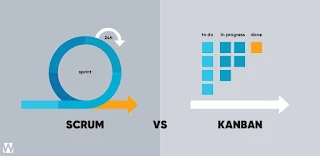Don't ask, "kanban vs scrum." Instead, ask "kanban or scrum" or even "kanban and scrum." Make it more about the principles than the practices.
Agile is a structured and iterative approach to project management and product development. It recognizes the volatility of product development, and provides a methodology for self-organizing teams to respond to change without going off the rails. Today, agile is hardly a competitive advantage. No one has the luxury to develop a product for years or even months in a black box. This means it’s more important than ever to get it right.
Scrum teams commit to ship working software through set intervals called sprints. Their goal is to create learning loops to quickly gather and integrate customer feedback. Scrum teams adopt specific roles, create special artifacts, and hold regular ceremonies to keep things moving forward. Scrum is best defined in The Scrum Guide.
Scrum | Kanban | |
|---|---|---|
Cadence | Regular fixed length sprints (ie, 2 weeks) | Continuous flow |
Release methodology | At the end of each sprint | Continuous delivery |
Roles | Product owner, scrum master, development team | No required roles |
Key metrics | Velocity | Lead time, cycle time, WIP |
Change philosophy | Teams should not make changes during the sprint. | Change can happen at any time |













.gif)
0 Comments